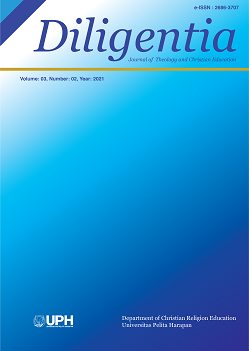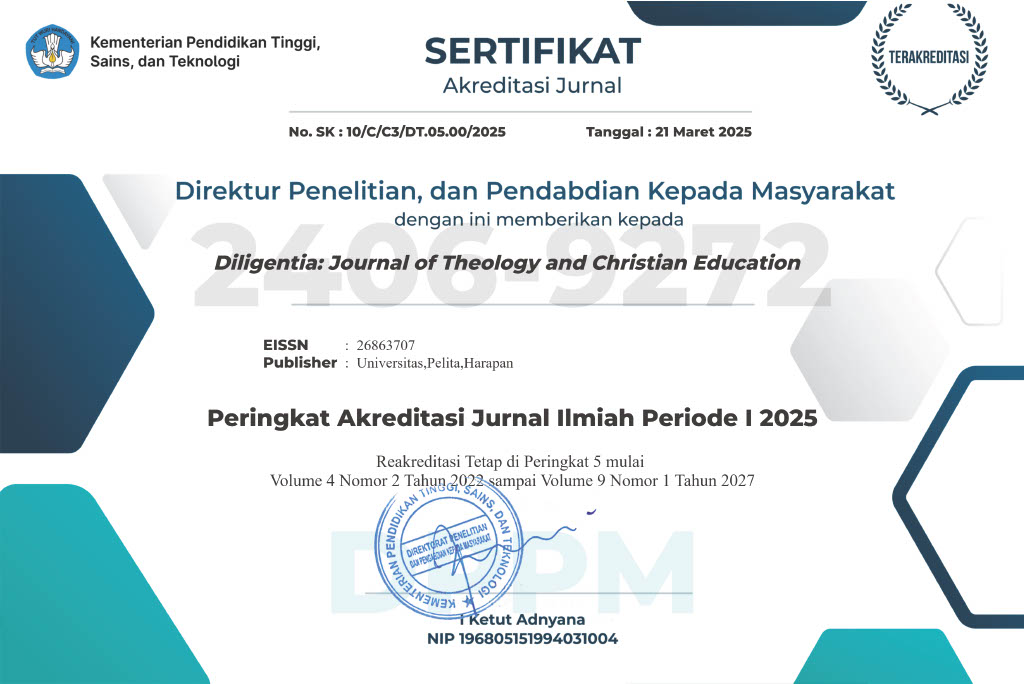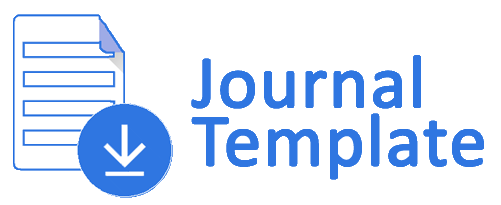Analisa Citra Penggunaan Media Sosial (Whatsapp dan Line) Sebagai Sarana Komunikasi Kegiatan Gereja yang Efektif [An Analysis of the Image of Social Media Usage (Whatsapp and LINE) as the Means of Communication for Effective Church Activities]
##semicolon##
https://doi.org/10.19166/dil.v3i2.3393##semicolon##
Analisa Citra##common.commaListSeparator## Skala Familiaritas##common.commaListSeparator## Skala Favorabilitas##common.commaListSeparator## Sosial Media dan Komunikasi##common.commaListSeparator## Image analysis##common.commaListSeparator## Familiarity Scale##common.commaListSeparator## Favorability Scale##common.commaListSeparator## Social Media and Communication要旨
The purpose of this study was to determine whether Whatsapp and Line social media have an effect as a means of communication for church activities where the study used 613 Christian student respondents at Pelita Harapan University, Karawaci using the Image Analysis Method with a familiarity scale and a favorability scale where the initial test of validity and reliability with SPSS and the result is that the use of social media in the church is significant and this research can be used as input for church leaders such as pastors and church members.
##submission.citations##
Abadi, Totok Wahyu., Sukmawan, Fandrian., & Utari, Dian Asha. “Media Sosial dan Pengembangan Hubungan Interpersonal Remaja di Sidoarjo.” Jurnal Program Studi Ilmu Komunikasi FISIP, Universitas Muhammadiyah (2016). https://doi.org/10.21070/kanal.v2i1.278.
Abidin, Bend. “Peran Media Massa dalam Mencegah Konflik.” Jurnal Ilmu Komunikasi, Pasca Sarjana Universitas Sebelas Maret Surakarta (2017).
Axel, Rumate., Dennis, Najoan., & Sugiarso, Brave A. “Rancang Bangun Aplikasi Berbasis Android Untuk Informasi Kegiatan dan Pelayanan Gereja”, E Journal Tehnik Elektro dan Komputer Unsrat, 1-2, (2017).
Ayun, Primada, Qurrota. “Fenomena Remaja Menggunakan Media Sosial dalam Membentuk Identitas.” Jurnal Fakultas FISIP, Universitas Diponegoro (2015). https://doi.org/10.12928/channel.v3i2.3270.
Anwar, Fahmi. “Perubahan dan Permasalahan Media Sosial”. Jakarta, Jurnal Muara Ilmu Sosial, Humaniora dan Seni, Vol1, no.1 (2017), 137-144. https://doi.org/10.24912/jmishumsen.v1i1.343.
Bovee, Cortland L, & Thill, John V. Komunikasi Bisnis 1, terjemahan Sindoro, Alexander. Jakarta, Indonesia: PT Prenhallindo, 2002.
Cangara, Hafied. Pengantar Ilmu Komunikasi, Jakarta, Indonesia: PT Raja Grafindo Persada, 2000.
Chandra, Robby. Teologi dan Komunikasi, Yogyakarta, Indonesia: Duta Wacana University Press, 1996.
DeVito, Joseph A. Komunikasi Antar Manusia, terjemahan Agus Maulana, Jakarta, Indonesia: Karisma Publishing Group, 2011.
Drucker, Peter F. Managing for Results, Brooklyn, NY: Harper & Row, Publishers Inc, 1990.
Farkas, Meredith G. Social Software in Libraries, Medford, NJ: Building Collaboration Communication and Community Online, Information Today Inc, 2007.
Handoko, T. Hani. Manajemen, Yogyakarta, Indonesia: BPFE UGM, 1995.
Handoko, T. Hani. Dasar-dasar Manajemen Produksi dan Operasi, Yogyakarta, Indonesia: BPFE UGM, 1996.
Hanjani, Febyuka. “Peningkatan kebutuhan akan Media Sosial pada Remaja, salah siapa?”, Personal Growth Conseling and Development Center, www.personalgrowth.co.id, 2014.
Kaplan, Andreas M, dan Haenlein, Michael. “Social Media”, Journal of systems and Information Technology, Emerald Group Publishing Limited, ESCP Europe, Paris, France: 2010 www.slideshare.net.
“Komunikasi yang Efektif”, Biro Komunikasi dan Layanan Informasi Sekretariat Jenderal Biro Komunikasi dan Layanan Informasi Sekretariat Jenderal Kementerian Keuangan RI Jakarta, Indonesia: 2013.
Kotler, Philip. Manajemen Pemasaran 1: Analisis, Perencanaan, Implementasi dan Pengendalian, terjemahan Hermawan, Ancella Anitawati, Jakarta, Indonesia: Salemba Empat, 1995.
Kotler, Philip. Manajemen Pemasaran 2: Analisis, Perencanaan, Implementasi dan Pengendalian, terjemahan Hermawan, Ancella Anitawati, Jakarta, Indonesia: Salemba Empat, 1995.
Kotler, Philip, et al,. Marketing in Australia, Hoboken, NJ: Prentice Hall of Australia Pty. Ltd, 1989.
Kotler, Philip T, dan Keller, Kevin Lane. Marketing Manajemen, Pearson 14, Manhattan, NY: 2012.
Mansour, Fakih. Runtuhnya Teori Pembangunan dan Globalisasi, Yogyakarta, Indonesia: Insist Press dan Pustaka Pelajar, 4 2006.
McLuhan, Marshall. Understanding Media: The Extension of Man, Cambridge, MA: The MIT Press, 1994.
Munandar, Harris, dan Suherman, Maman. “Aktivitas Komunikasi Pemerintahan Ridwal Kamil di Media Sosial”, Prosiding, Prodi Hubungan Masyarakat, Universitas Islam Bandung, 2016.
Naga, Dali Santun. Teori Sekor pada Pengukuran Mental, Jakarta, Indonesia: PT. Naga Rani Citrayasa, 32013.
Nugroho, Bayu, Pratama, dan Jayanti, Sherly. “Implementasi Sistem Informasi Berbasis web, studi kasus Gereja GKE Sion Palangkaraya”, STMIK Palangka Raya, 2017. https://doi.org/10.33020/saintekom.v7i2.44.
Ohmae, Kenichi. Dunia Tanpa Batas, Kekuatan dan Strategi di Dalam Ekonomi yang Saling Mengait, (terjemahan) Budiyanto, Jakarta, Indonesia: Binarupa Aksara, 1991.
Priyatno, Duwi. Tehnik Mudah dan Cepat Melakukan Analisis Data Penelitian dengan SPSS, Yogyakarta, Indonesia: Penerbit Gava Media, 2010.
Putri, Wilga Secsio Ratsja, Nurwati. R Nunung, dan S. Meilanny Budiarti. “Pengaruh Media Sosial terhadap Perilaku Remaja”, Prosiding KS Riset dan PKM, Jakarta, Indonesia: 2016. https://doi.org/10.24198/jppm.v3i1.13625.
Santoso, Singgih. Menguasai SPSS22 from Basic to Expert Skills, Jakarta, Indonesia: PT Elex Media Komputindo, 2015.
Setiawan, Wawan. “Era Digital dan Tantangannya”,Seminar Nasional Universitas Pendidikan Indonesia, Jakarta, Indonesia: 2017.
Sopiah, “Faktor-faktor yang mempengaruhi penggunaan media facebook”, Proceeding Seminar Nasional Aplikasi Tehnologi Informasi (SNATI) Universitas Islam Indonesia, 2013.
Social Media, Social Media Club NYC, www.heidicohen.com (articles), 2018.
Surahman, Sigit. “Dampak Globalisasi Media terhadap Seni dan Budaya Indonesia”, lppmunsera.org, LONTAR - Jurnal Ilmu Komunikasi Universitas Serang Raya, Banten, Indonesia: 2017.
Tafonao, Josua; Belasunda, Riksa, dan Rahmansyah, Aris. “User Interface Aplikasi ”˜Warta Digital’ berbasis Android untuk Gereja Kemenangan Iman Indonesia cabang Bandung”, e Proceeding of Arts and Design, Program Studi Desain Komunikasi Visual, Universitas Telkom, 2017.
##submission.downloads##
出版済
##submission.howToCite##
巻号
セクション
##submission.license##
Authors who publish with this journal agree to the following terms:
1) Authors retain copyright and grant the journal right of first publication with the work simultaneously licensed under a Creative Commons Attribution License (CC-BY-SA 4.0) that allows others to share the work with an acknowledgement of the work's authorship and initial publication in this journal.
2) Authors are able to enter into separate, additional contractual arrangements for the non-exclusive distribution of the journal's published version of the work (e.g., post it to an institutional repository or publish it in a book), with an acknowledgement of its initial publication in this journal.
3) Authors are permitted and encouraged to post their work online (e.g., in institutional repositories or on their website). The final published PDF should be used and bibliographic details that credit the publication in this journal should be included














